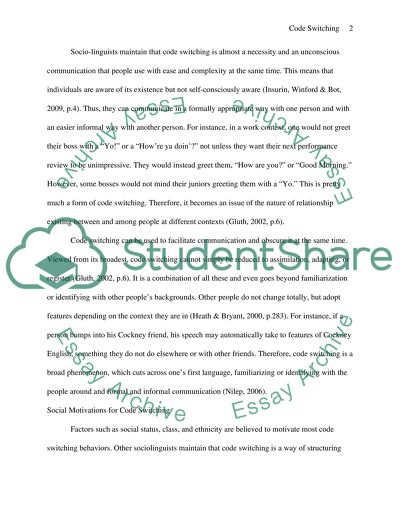Cite this document
(“Interpersonal Communication: Code Switching Essay”, n.d.)
Retrieved from https://studentshare.org/marketing/1398634-interpersonal-communication-code-switching
Retrieved from https://studentshare.org/marketing/1398634-interpersonal-communication-code-switching
(Interpersonal Communication: Code Switching Essay)
https://studentshare.org/marketing/1398634-interpersonal-communication-code-switching.
https://studentshare.org/marketing/1398634-interpersonal-communication-code-switching.
“Interpersonal Communication: Code Switching Essay”, n.d. https://studentshare.org/marketing/1398634-interpersonal-communication-code-switching.


